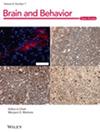Identification of Risk Factors Influencing Hemorrhage Volume in Aneurysmal Subarachnoid Hemorrhage: A Multicenter Retrospective Study
Abstract
Objective
This multicenter retrospective study aimed to identify significant risk factors influencing hemorrhage volume in patients with aneurysmal subarachnoid hemorrhage (SAH).
Methods
A total of 891 patients diagnosed with SAH were included from multiple medical centers. Data encompassing demographic characteristics, medical history, clinical parameters at admission, and radiographic findings were collected and analyzed. Univariate and multivariate logistic regression analyses were conducted to investigate associations between various risk factors and hemorrhage volume.
Results
This study identifies several factors significantly associated with increased hemorrhage volume in patients with subarachnoid hemorrhage (SAH). Multivariate analysis revealed that diabetes (P = 0.022), hypertension (P = 0.047), and saccular aneurysm morphology (P = 0.008) were independent risk factors for high hemorrhage volume. Additionally, larger aneurysm size (maximum diameter: P = 0.007, neck diameter: P = 0.021) and higher systolic blood pressure after onset (P = 0.002) were also significant predictors of increased hemorrhage volume. Factors such as age (P = 0.05) and time interval to the first CT scan (P = 0.022) were found to be associated with hemorrhage volume in univariate analysis but did not maintain independent significance in multivariate regression.
Conclusion
This study highlights key risk factors, including diabetes, hypertension, and saccular aneurysm morphology, which independently contribute to higher hemorrhage volume in SAH patients. Management strategies focusing on early detection and control of these factors may improve clinical outcomes by reducing the risk of hemorrhagic complications. While other factors such as age and time interval to the first CT scan were associated with hemorrhage volume, they did not demonstrate independent causality in the multivariate analysis, suggesting that their role in hemorrhage volume may be secondary or context-dependent.

 求助内容:
求助内容: 应助结果提醒方式:
应助结果提醒方式:


